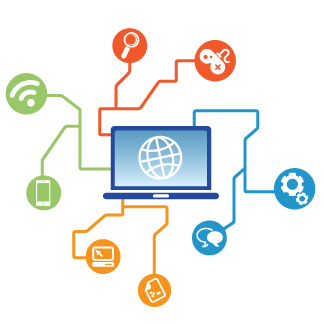In the world of Internet of Things (IoT) and single-board computer, the Raspberry Pi sticks out as a functional and cost-efficient service for different tasks. One essential aspect of handling these projects is establishing effective remote access to the Raspberry Pi, permitting users to check and manage their IoT tools from anywhere in the world. The amalgamation of IoT tracking and remote peer-to-peer (P2P) Virtual Private Cloud (VPC) connectivity has actually come to be an essential method for fanatics and professionals alike.
The need for remote accessibility to IoT tools has become increasingly obvious as the IoT environment continues to broaden. Monitoring the condition of IoT tools in real-time has ended up being an essential requirement for efficient monitoring. Here, the Raspberry Pi, with its portable design and robust capacities, acts as a central center for collecting and refining information from different sensors and tools. To guarantee seamless connectivity, remote P2P VPC remedies have actually obtained importance, giving a protected and straight connection in between the user and their IoT framework.
Remote SSH Brilliance: Navigating IoT Environments Behind Firewalls
Guaranteeing the safety and security of remote accessibility to IoT devices is extremely important. Safely connecting to Raspberry Pi tools is not just concerning comfort yet likewise regarding safeguarding sensitive data and stopping unapproved accessibility. Remote SSH (Secure Shell) has actually become a dependable technique for firmly accessing and handling Raspberry Pi gadgets. It establishes a safe and secure communication network over an unconfident network, making it an excellent option for from another location monitoring and controlling IoT gadgets.
The convergence of remote access and IoT monitoring has brought about cutting-edge options that make it possible for users to keep an alert eye on the condition of their tools. Remote tracking of IoT devices has actually come to be much more advanced, enabling users to gather insights right into performance metrics, receive informs for abnormalities, and also carry out remote diagnostics. This degree of control is particularly essential for applications where IoT tools are released in remote or unattainable areas.
Peer-to-peer (P2P) connection in the context of IoT has gained traction as it supplies a direct interaction web link in between devices without the demand for intermediaries. P2P IoT solutions allow reliable information exchange in between devices, improving the general responsiveness of the system. Integrating P2P connection with a Virtual Private Cloud (VPC) style guarantees a personal and isolated network setting, including an added layer of protection to remote access.
The idea of safely accessing IoT tools prolongs past Raspberry Pi to incorporate a large array of gadgets that comprise the IoT ecosystem. Whether it’s sensors, actuators, or various other IoT parts, establishing a safe connection is important for preserving the stability and confidentiality of the transmitted information. Safe gain access to protocols, such as SSH, play a crucial duty in attaining this objective, making sure that just accredited people can communicate with and monitor IoT gadgets from another location.
The assimilation of SSH into the remote access structure for IoT tools makes it possible for users to from another location keep an eye on Raspberry Pi tools also when they lie behind firewall programs. This is especially important for circumstances where IoT devices are deployed within corporate networks or personal environments with rigorous safety measures. SSH’s capability to pass through firewall softwares firmly makes it a crucial device for taking care of IoT framework in varied and tough network environments.
For additional insights on enhancing remote accessibility to Raspberry Pi and improving IoT gadget monitoring, have a look at remotely monitor iot
Beyond Firewalls: Remotely SSH into IoT Devices with Confidence
Peer-to-peer (P2P) links within a Virtual Private Cloud (VPC) for IoT present an unique measurement to remote gain access to remedies. This technique not only ensures direct connection but also offers a scalable and isolated network atmosphere for IoT tools. The combination of P2P and VPC addresses typical difficulties connected with typical remote gain access to approaches, using a much more robust and flexible option for firmly connecting and keeping an eye on IoT devices.
In conclusion, the landscape of remote access to IoT gadgets, particularly Raspberry Pi, has advanced to incorporate sophisticated solutions that prioritize security, efficiency, and scalability. The combinations of IoT surveillance, remote P2P VPC connection, and protected accessibility procedures like SSH has driven the capacities of lovers and professionals in handling their IoT projects. As the IoT community continues to broaden, the significance of reliable and secure remote gain access to services will just come to be much more pronounced, driving additional development in this vibrant field.